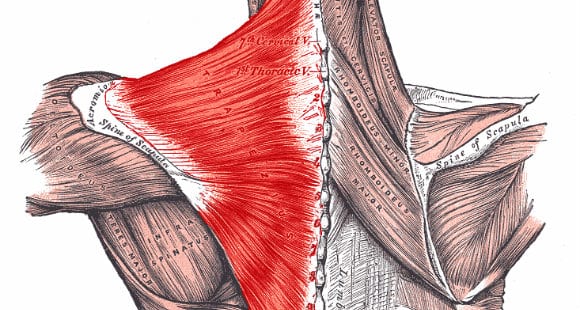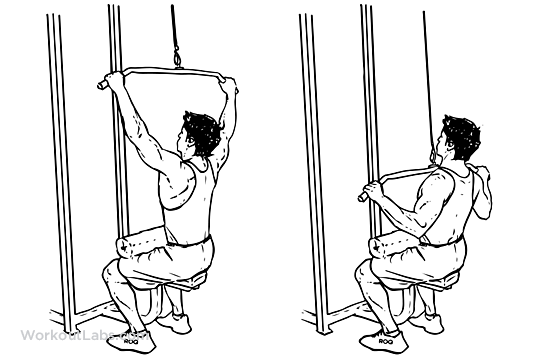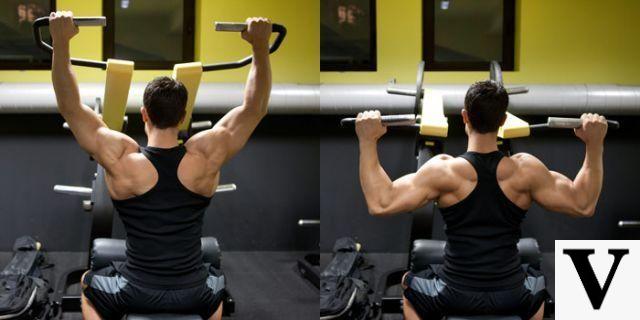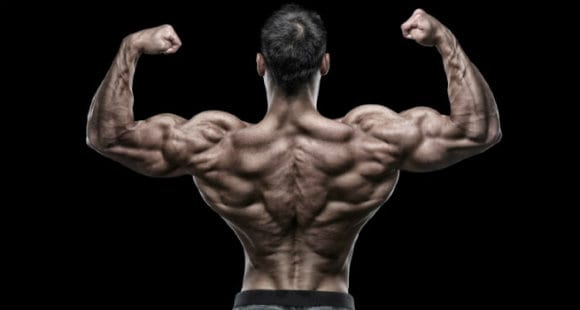By the healthiergang writer , personal trainer.
Pull Down: Anatomical Notes
La back muscles it is one of the largest in the body and is made up of countless muscles, the main ones being:

? great dorsal;
? small and large round;
? infraspinatus;
? supraspinatus;
? large and small rhomboid;
? trapezoid.
The main movements that these muscles perform are: vertical arm adduction, horizontal adduction, scapular adduction, retroversion; the great dorsal also collaborates in the extension of the humerus; the large and small round also to the function of light internal rotation of the arm and finally the large and small rhomboid keep the shoulder blades in adherence, allowing their elevation.
To fully stimulate the back muscles it is sufficient to insert, within the training routine, exercises such as pull ups (tractions), rowing and their variants.
Given the great variety of muscles that make up this fascia and their functions it is important diversify back training, paying the utmost attention to both the correct execution of the movements and the choice of the right load.
Let's talk now about the Pull Down.
Pull-down
For a correct execution of the exercise, stand in front of the high cable or in front of the lat machine (lat pull down); tilt the trunk slightly forward; grasp the bar with hands in pronation, or with palms facing the ground, at a distance equal to that of the shoulders or slightly greater; elbows locked, slightly bent (choosing the angle of the elbow it is important to avoid movement of the elbow).
Assuming the correct position, lower the bar, without changing the angle of the elbow, until it reaches the thighs; at the point of maximum contraction, slightly expand the chest inside the arms to slightly increase the dorsal muscle contraction.
Return to the starting position, always without changing the angle of the elbow and trying to keep the shoulders down.

Excessively high loads cannot be used in this exercise, as the cable would pull us upwards.
The advantage of this exercise is that the biceps muscle does not participate while, on the contrary, the triceps muscle is active; this for two reasons: the first because it has to fix the elbow joint in a position so as to avoid movement; secondly, during the push-down movement, the usual movement of the push-down exercise, this muscle tends to be helped to complete the movement.
This is an exercise of medium difficulty recommended for athletes who have already started, as it can be difficult to use a correct and clean technique.
The muscles mainly involved are great dorsal, round e triceps; secondarily, posterior head of the deltoid, rhomboid, part of the pectoralis major, trapezius and dentate.
Common mistakes
- most common mistakes I'm:
? unbalance the body forward;
? flex the trunk forward to take advantage of the help of the abdomen;
? flex the elbows while performing the exercise using the work of the triceps;
? springing with the legs;
? use excessive loads;
? pull the bar instead of making an arc movement.
variants
Some variations to the classic exercise are the following.
? Pull down with rope: the musculature involved is the same, the movement is the same, the difference lies in the fact that with the use of the rope it is possible to increase the final contraction, as there is no bar to act as a stop, which instead beats on the legs .
Furthermore, with the use of the rope you can perform the exercise with only one hand; which makes it even more difficult to execute.
? Pull down with machine use: the muscles involved are the same, the movement is the same with the advantage of reducing possible errors. Great for beginners as the movement is guided and the load can also be adjusted to the user's training level.

Final Tips
This exercise can be performed at the end of the workout, at the beginning or in super sets with other exercises.
Council:
? at the end of training 3 series of 15/20 repetitions; recovery 1 '/ 1'30 "maximum;
? at the beginning of training 4/5 series of 10/12 repetitions; recovery 1'30 ”(useful as a pre-anchoring exercise).
In super sets, for example lat machine, wide grip SS pull down x MAX reps (to completely exhaust the muscle).

When training the back it is important to carefully choose the exercises to be performed and base the construction of the program on your physical characteristics.
Select the load carefully, also based on the pathologies present such as hyperlordosis, hyperkyphosis, the presence of pains or hernias.
It is also essential to remember that, in order not to create imbalances on a physical level, it is important to train both the front and the back of our body.
Don't forget that a healthy back is the mirror of a healthy life.


























